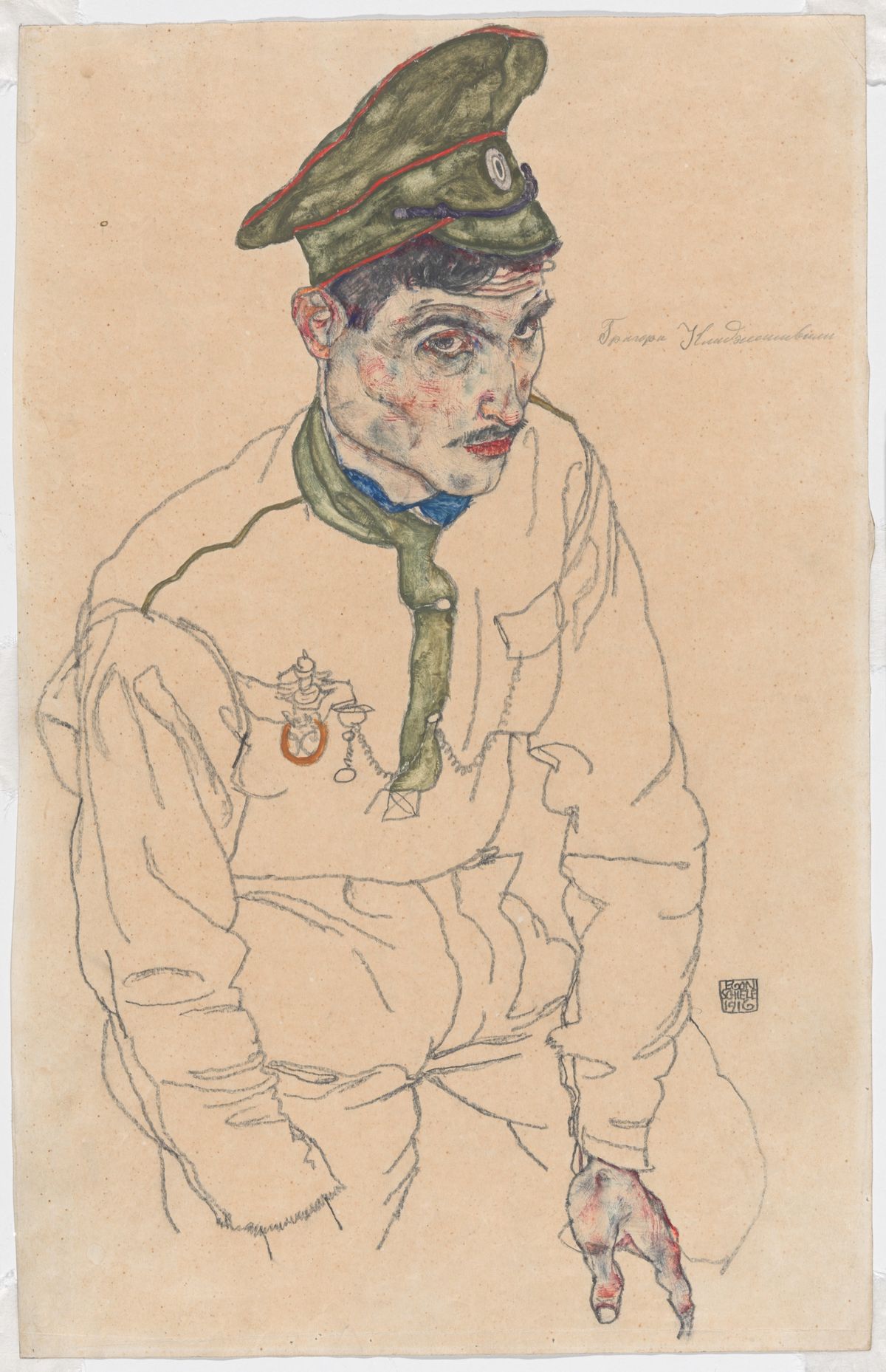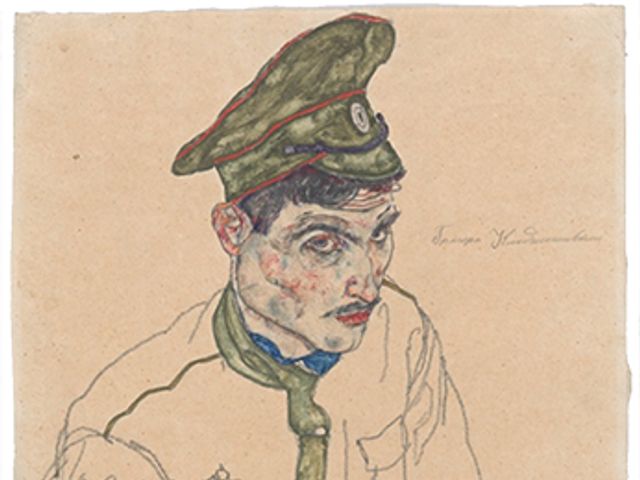The Art Institute of Chicago (AIC) sharply struck back at claims by New York City’s District Attorney’s Office that the 1916 Egon Schiele drawing Russian War Prisoner, which the museum acquired in 1966, was “stolen property”, claiming that the work “was not looted during [the Second World War] but was, instead, lawfully sold by surviving family members after [the Second World War]” (emphasis theirs).
The museum presented a 126-page brief to the New York State Supreme Court on Tuesday (23 April) that came in response to the Manhattan District Attorney’s 22 February claims that the drawing’s theft in 1938 “is one of the most flagrant Nazi-era lootings of a Holocaust victim’s cultural property yet uncovered”.
It was late last summer that the New York court allowed the Manhattan District Attorney’s Office to take possession of Russian War Prisoner, although the drawing has remained at the AIC, awaiting a ruling on whether or not it should no longer belong to the museum and be restituted to the heirs of Franz Friedrich “Fritz” Grünbaum (1880-1941), an Austrian Jewish cabaret artist, operetta and popular song writer whose art collection was looted by Nazis before he was murdered in the Holocaust. Those named heirs are Timothy Reif, David Fraenkel and Milos Vavra.
The heirs already had sought through a lawsuit in a federal court for the drawing’s return to their family, but in late February Judge John G. Koeltl ruled in that case that the statute of limitations for heirs to have brought the claims had expired and that the museum had not purchased the artwork in bad faith—that is, knowing that it had been looted. “[T]he defendant is a good-faith possessor”, Koeltl wrote in his decision.
The Manhattan District Attorney’s claim, however, was made in criminal court. In late February, Matthew Bogdanos, a senior trial counsel in the office of the District Attorney of New York County and chief of the Antiquities Trafficking Unit, laid out a 150-page petition to the New York State Supreme Court claiming that, based on detailed examinations of numerous Nazi-era records, including appraisal inventories, export applications, correspondence and “other evidence obtained pursuant to the ongoing active criminal investigation into a smuggling network that trafficked Nazi-looted art from Europe through New York County”, that the “evidence demonstrates that Grünbaum’s art collection, particularly his 80-plus works by Schiele, were systematically stolen from Grünbaum after he was imprisoned in the Dachau Concentration Camp for the crime of being Jewish and then sold for personal profit as part of a conspiracy” by the Swiss auctioneer Eberhard Kornfeld and New York City gallery owner Otto Kallir.
A spokesperson for the AIC referenced Judge Koeltl’s civil court decision, noting that a “federal court has already ruled that the Grünbaum art collection was not looted, and in November 2023, a federal judge ruled that we rightfully possess this work. We cannot agree to set the precedent of returning this piece when the evidence clearly demonstrates the work was never stolen.” In its 23 April response to Bogdanos’s claims, the museum restated that “there is no evidence at all—none—that the work was ever physically seized by the Nazis”.
The museum’s position is that while Grünbaum himself was a victim of the Nazis, his art collection was not confiscated but remained in the family and that Russian War Prisoner was sold by Grünbaum’s sister-in-law, Mathilde Lukacs, in 1956. In the AIC’s response, it is noted that “never once, in decades of litigation and investigation squarely focused on the Grünbaums’ art collection, has a single shred of documentary evidence emerged to support the theory that the Nazi regime physically seized and then sold or otherwise disposed of the Grünbaums’ art collection”, including the Schiele drawing in question.
No date has been set for a court hearing on the competing claims about the Schiele drawing. A spokesperson for the New York City District Attorney’s Office only commented that “we will respond in court” to the museum’s claims that it owns the artwork legitimately.



